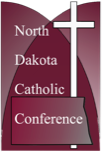
North Dakota's Blaine and Opportunity>
By Christopher Dodson
Executive Director
North Dakota Catholic Conference
June 2020
The door is open, but will we grasp the opportunity?
In the final days of its most recent session, the U.S. Supreme Court delivered a major victory for religious freedom and school choice with Espinoza v. Montana Department of Revenue.
Montana, like over 30 other states, has what is commonly called a “Blaine Amendment” in its state constitution. These provisions bar, in various phrasings, any government aid for religious schools, even for non-religious purposes.
They take their name from James Blaine, a 19th Century politician who almost became president. Long before his narrow defeat to Grover Cleveland in 1884, however, Blaine proposed an amendment to the U.S. Constitution that would have barred any state from using money for “sectarian” schools. It was popular among nativist and other anti-Catholic politicians who sought to curtail Catholic influence in the country by ensuring that only “common” schools that were Protestant in character received public assistance.
After failing by just four votes to pass Blaine’s amendment, supporters of the proposal turned to the states. Both explicitly and implicitly, Blaine Amendment supporters made adoption of state Blaine Amendments in state constitutions a prerequisite for admission into the Union. Born of bigotry, these amendments haunt us today, sometimes blocking any efforts to give parents a choice in education.
North Dakota has its own Blaine Amendment; its own vestige of anti-Catholic prejudice. It states: “No money raised for the support of the public schools of the state shall be appropriated to or used for the support of any sectarian school.”
Most school choice proposals do not actually use “money raised for the support of the public schools.” Nevertheless, the powerful government school monopoly has contended that any school choice program would take money away from the “money raised for the support of the public schools” and would, therefore, violate the state’s Blaine Amendment.
Supporters of educational freedom in the state House made an effort to repeal the amendment in 2013. The proposal would merely have given voters the opportunity to remove the Blaine Amendment from the state constitution. It would not have enacted vouchers, tax credits, or any other school choice program. Nor would it have allowed money expressly raised and appropriated for the public schools to be used for nonpublic schools. Nevertheless, The resolution failed by a 47 to 47 vote. It takes 48 votes to pass legislation in the House.
Montana’s legislation was simple. It provided a tax credit of up to $150 to any taxpayer who donates to a participating “student scholarship organization.” The scholarship program then could use the donation to award scholarships to children for tuition at a private school. The state’s tax department, however, cited the Montana Blaine Amendment and blocked the program entirely. Montana’s Blaine Amendment barred government aid to any school “controlled in whole or in part by any church, sect, or denomination.”
The case eventually found its way to the U.S. Supreme Court, which struck a blow not only to Montana’s Blaine Amendment, but probably all other state Blaine Amendments. The Court’s ruling reflected a common sense interpretation of the Constitution. As Chief Justice Roberts wrote for the Court: “A State need not subsidize private education. But once a State decides to do so, it cannot disqualify some private schools solely because they are religious.”
Montana’s amendment did not bar religious use of state funds. It expressly disqualified schools solely because they were religious. On its face, North Dakota’s Blaine Amendment is, after Espinoza, worse than Montana’s. It disqualifies only “sectarian schools.”
At the time of its adoption, “sectarian” was code for Catholic, something the Supreme Court meticulously documented. Even if some people today think that the word means something different, it clearly still means “religious.”
North Dakota’s Blaine Amendment, therefore, appears to be dead. The Supreme Court, adhering to the Constitution, has done what the House in 2013 failed to start by one vote.
Although North Dakota’s Blaine Amendment may no longer have any force, its apparent demise does not mean that North Dakota parents automatically have school choice. It was only a potential barrier to helping students. The legislature must first pass programs to take advantage of its collapse. It must take advantage of this new opportunity.
Nor does the Espinoza decision mean that the anti-Catholic language no longer exists in North Dakota’s Constitution. It would take an act of the legislature or an initiated measure followed by vote of the people to remove it. In the meantime, it stays there; a reminder and lesson of how prejudice can become institutionalized.
What We Do
The North Dakota Catholic Conference acts on behalf of the Roman Catholic bishops of North Dakota to respond to public policy issues of concern to the Catholic Church and to educate Catholics and the general public about Catholic social doctrine.

Contact Us
North Dakota Catholic Conference
103 South Third Street, Suite 10
Bismarck, North Dakota
58501
1-888-419-1237
701-223-2519
Contact Us

